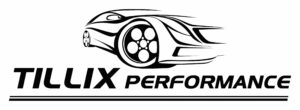This series of articles is about diesel chips, performance products, diesel remapping, engine tuning, intercoolers and how those all work together in your diesel engine vehicle.
The intention of these articles is to separate fact from fiction regarding these topics, and dis-spell many myths along the way.
The links on the right will take you to each article.
How a Diesel Engine Works
Unlike a petrol engine, a diesel engine relies on compression to ignite the air fuel mixture rather than a spark plug.
The calculations used to determine, how much air goes in, how much fuel goes in and when it gets ignited are all very similar to a late model petrol engine, so a majority of this information can be carried back and forth for the most part.
The engine control unit (ECU) reads a lot of sensors before it decides when, and how much fuel to inject on each engine cycle.
Main sensors the engine control unit reads
Crank Angle Sensor
The ECU reads this to determine which piston is next to fire, and how far away it is from its injection point.
Cam Angle Sensor
Used to determine when one complete engine cycle (2 Revolutions) of the engine have been completed.
This is critical for the ECU to determine which injector is up next to fire in the cycle.
Boost Sensor/Manifold Absolute Pressure Sensor (MAP)
The ECU reads this to determine how much air pressure is going into the cylinder. The more pressure, the more oxygen that is available to burn the fuel that’s injected.
At sea level, the pressure in the engine is 14.7 pounds per square inch (PSI). Anything shown in Gauge pressure, is 14.7psi + boost in PSI.
Air Temperature Sensor
As critical as air pressure. The cooler the incoming air is, the more oxygen that is available to burn the diesel that is injected into the cylinder.
This component of it is as important as air pressure when it comes to engine longevity.
Engine Coolant Temperature
Used as a compensation by the ECU to determine if too much fuel is being injected resulting in very high combustion temperatures.
Some aftermarket ECU’s also read this sensor and use it to trim the tune down if the temperatures are to high.
Exhaust Gas Temperature
Rarely used by OEM ECU as the EGT does not indicate actual combustion temps on modern day diesel engines. Only water temp gives a true reading of actual combustion temps due to post combustion fuel injection that keeps EGT high to help drive the turbocharger exhaust wheel.
Throttle Position Sensor
Is used by the ECU to determine how much torque is being requested by the driver.
Common Rail Pressure Sensor
Measured by the ECU to determine how much pressure the CR pump is delivering.

